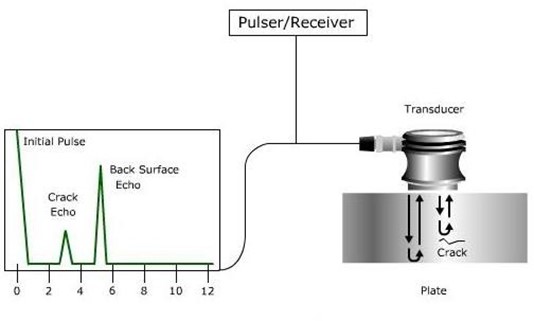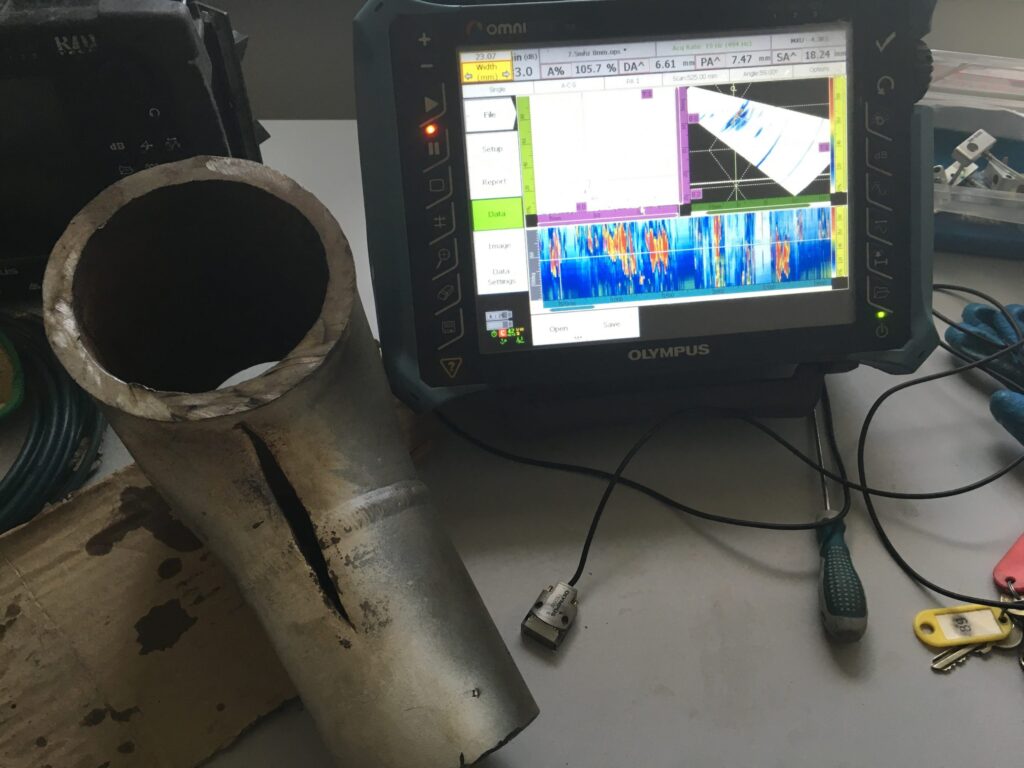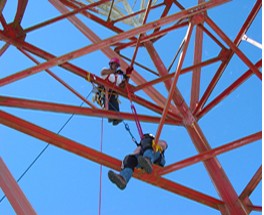An Introduction to Nondestructive Testing Jobs (Level 1, II & III)

The Best Jobs You’ve Never Heard Of – NDT Technician
Nondestructive testing (or non-destructive testing or NDT), a form of inspection that allows materials to be analyzed without being taken apart or destroyed, is critical for many industries. The assets and products being tested can maintain their function, unlike with other forms of testing, and can be safely used after inspection.
NDT is especially vital for industries that can’t compromise on safety, such as oil and gas, petrochemical, aerospace and aviation, nuclear, and power generation. These industries deal directly with human lives, whether those humans are product consumers, passengers, or workers, and NDT decreases the risks involved.
But on top of maintaining asset integrity and safety, NDT is often utilized to optimize maintenance schedules and manufacturing processes. Many companies rely on NDT technicians to improve their businesses, which means that technicians can look forward to having a stable and secure career with consistent access to jobs.
NDT Inspection Jobs Are A Growing Field
NDT technicians can thank the industry’s success for their job security; nondestructive testing is considered essential to many businesses, and the market as a whole is expected to increase to nearly $20 billion in value by 2020. Advances in technology are the source of much of the industry’s growth.
The salary for any NDT job is dependent on position, level of certification, and the amount of experience the candidate has, but the base pay across the board is around $66,000, with salaries on the higher end reaching more than $100,000.
Over time, more industries are expected to start using NDT inspections, although oil and gas industry will most likely remain one of the biggest employers of NDT technicians.
Demand for NDT technicians will likely increase along with the industry’s growth. Anyone looking to start a career as an inspector has a number of potential positions and career paths to choose from. Their training can point them to one of the three NDT technician levels; as each level increases, the technician gains more job responsibilities, although the average pay increases as well.
Each NDT level requires a certain amount of training, dependent on the technician’s prior education, experience and method in which they wish to be certified. This article will explain each of the levels in more detail, as well as provide information about the average salary, training requirements and future growth opportunities.
Basic Requirements For NDT Employment On All Levels
Although each of the NDT levels comes with its own requirements for training and education, all three levels share some basic prerequisites.
Education for any NDT level differs; some future technicians may choose to start their career as soon as they obtain a high school diploma or equivalent, while others begin at a two- or four-year school.
In most cases, the amount of prior education received will affect how many total hours of training the technician needs to reach either Level I or II, although some examination methods require the same number of training hours no matter how much education the technician has.
Level III, on the other hand, usually requires at least two years of education before starting their training. A Level III technician must also pass a different entrance examination than that of a Level I or II technician. Each exam consists of three parts, but the I & II exam is made up of a written and method-specific (covering the particular methods they are training for) portion. ACCP is the only type of certification that requires practical sections to their exam.
The III exam, meanwhile, involves basic, method (covering NDT method and technique application) and specific tests.
Apart from general education and training, all NDT technicians must pass a visual exam before starting their work. Technicians are allowed to have corrected vision but must be able to pass a nearsightedness test with either natural or corrected vision. They must also be able to recognize color contrast or shades of gray.
Potential NDT technicians have a variety of sources from which they can receive their training. Colleges, vocational or technical schools, training companies, and the military all have the capacity to equip candidates with the required training for their inspection method, including online classroom training.
NDT LEVEL I
Level I is the most basic of the three NDT levels and is the starting point for most trainees before they can advance to a higher level. Level I technicians can perform specific actions according to written instructions and record the results of the tests that they run.
All Level I technicians are supervised by either a Level II or Level III technician and must have their work checked over. Potential Level Is must be excellent at following instructions and prove their proficiency in specific tests as a trainee.
Technicians can also receive a Level I Limited certification, which has much of the same responsibilities as a typical Level I but is limited to a specific material or assembly.
Level I Salary: ~$53,000 (Salary.gov)
Requirements: Before becoming a Level I technician, candidates must have at least a high school diploma or equivalent. They must pass their three entrance exams with at least a 70 grade on each individual exam and at least an 80 composite score (meaning the score of all three tests combined).
The Level 1 technician must also complete a specified number of training hours, which is dependent on their educational background and examination method that they are training for.
NDT LEVEL II
An NDT Level II technician has many of the same responsibilities but is not required to be continuously supervised. In fact, Level II technicians often provide guidance and supervision for Level I technicians or NDT trainees, meaning they have to be very familiar with inspection methods.
Typically, a technician will need more training to reach Level II, but the amount of hours required depends on the examination method. In this advanced position, technicians should be able to set up and calibrate the equipment.
In addition to recording test results, Level II technicians should also be able to interpret, organize and report results. They will be assigned a particular examination method after completing the required number of training hours, and they are required to understand how to perform that method.
Level II Salary: ~$77,900 (Salary.gov)
Requirements: Much like the requirements to become a Level I technician, Level II status must be met with at least a high school diploma or equivalent, as well as at least a 70 grade on each of the exam portions and an 80 composite score.
Level II technicians also have to complete a specified number of training hours for their examination method, although the number of hours required to reach Level II is usually more than what is required for Level I.
NDT LEVEL III
Out of the three NDT certification levels, a Level III status is by far the most difficult to reach and often requires specific education and work experience in addition to passing their NDT exams. Level III also has the most responsibilities but is also given a higher average base salary.
A Level III technician must be able to set the techniques and procedures that Level I and II technicians follow. This also allows them to be a supervisor for both Level I and II individuals and, sometimes, to create the exams that potential Level I or II technicians will take.
At the same time, the amount of knowledge and experience that a Level III requires can qualify them for other career paths within the NDT field. Once a technician becomes certified as a Level III, they can also choose to become a consultant, testing laboratory owner, manager, supervisor, educator, or administrator.
Many of the Level III responsibilities are the same as a Level II: they must be able to interpret and evaluate test results, as well as interpret codes and standards. However, their knowledge base should be a little more expanded and they should be familiar with multiple appropriate NDT methods, unlike a Level II which is only expected to understand their assigned inspection method.
Level III Salary: ~$132,237 (Salary.gov)
Requirements: Because the Level III position is much more advanced than a Level I or II, technicians have to meet a completely different set of requirements before beginning work.
From an education perspective, while Level I or IIs often go without a higher degree, Level IIIs are somewhat more likely to have a degree from a two- or four-year college or university in either engineering or science.
In addition, if the technician has a Bachelor’s degree, they must complete at least one year of work experience similar to Level II. If the technician has completed two years of school in engineering or science, they will have to have at least two years of work experience. Sometimes, a Level III technician can reach that stage without a degree, but they will have to substitute at least four years of work experience.




